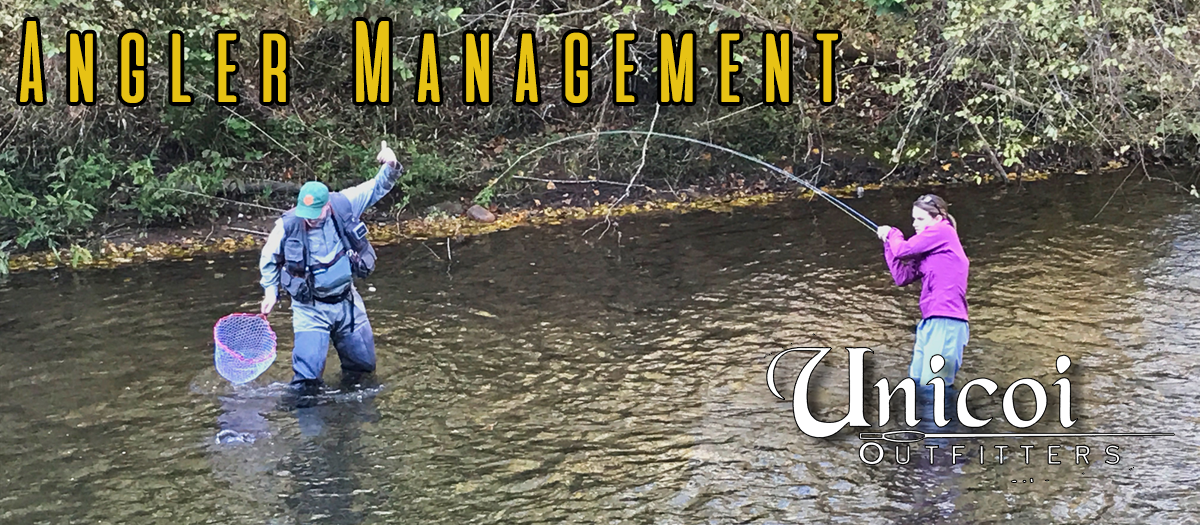 |
| Please don't try this at home! |
Ed. Note: Re-published by popular demand
Many of you know that my claim to fame is that I've taken naps on some of the most famous trout streams in North and South America. It's an honor I accept proudly and hope to expand my resume' in the coming seasons. But as I bask in the sunny glory of my accomplishments it is becoming obvious to me that advancing years are opening up another category for me; taking unplanned dunks in many of those same streams.
I could blame it on an inner ear thing. A couple of years back I was climbing out of the Chattahoochee River after some shoal bass fishing and as I got both feet up on the bank I simply began to fall backwards for no apparent reason. Fell off a four foot bank flat on my back on a big rock in the river. Ouch! I honestly thought I had broken some ribs. And this was about 3 days before I was headed to Yellowstone. Thankfully, I was just bruised and scraped up a little. Turns out I did have an inner ear problem so I didn't have to chalk that one up to getting older.

I could also blame it on the fish. While fishing the Madison River with my friend Don Baldwin in 2008, I hooked a nice rainbow in a riffle just upstream of a section of rapids where the river diverted around a huge boulder and logjam. Of course the fish immediately took off for the rapids and with the force of the river helping her, it was impossible for me to get her back upstream to me so I decided to carefully pick my way around the boulder while holding on to the log. It's funny how having a good fish on the end of your line can make you do irrational things. As I got half way into my maneuver, I realized there was no bottom beneath my feet. I see Don running to put his gear on the bank and hear another angler nearby yell, "Are you going to help him?". Don's reply, "Heck no, I'm getting my camera!"
My only other option as I see it is to blame these events on, as my eye doctor told me, too many birthdays. It's difficult to accept this one but it may be true. This past Saturday, after a fine low country boil lunch with the Rabunites on the Chattooga River, I hit the Delayed Harvest section about 2:00 for an afternoon on the most beautiful river in the southeast. It was one of those days where I literally did not care if I caught anything or not. I really do have those! I found myself an hour and a half later still working the same pool. It's one of the deepest pools on the river, the water was crystal clear and I could see several big fish sitting near the bottom. I got into my hard-headed mode and decided to keep changing things up until I got one. Never happened. One dinky rainbow was the only one I fooled. But back to my story. I was standing on a ledge on the east side of the river overlooking the pool and turned around to walk out. In my mind, all this happened in slow motion when my right boot began to slide off the edge. I suppose I could have thrown my body backwards and landed in 18" of water on the ledge but your mind will trick you into thinking you'll regain control, catch your balance and walk safely out. Never trust your own mind in these circumstances!
Remember, the pool I've been fishing is a good 8 or 10 feet deep, right off the ledge, sudden drop. I'm now swimming...in 46º water! Invigorating but not recommended. You need to understand, I didn't stumble and catch myself then stood up. I was FLOATING! If anyone was near enough to see me, I didn't notice but I'm sure they've got stories of
"the crazy fly fisherman up in that big hole up there." I realized all I could do was float downstream until I could touch bottom but I'm laughing hysterically as I'm floating. What else can you do? It had to be a funny thing to see. Honestly, the only part of me that wasn't wet was the very top of my hat. The rest of my hat was wet from being underwater.

Easing out of the river looking like a haggard muskrat, I was grateful for the wading pants I was wearing because they were tightly cinched up around my waist and prevented me from taking on a serious amount of water. The velcro adjustable waist worked equally as well as a belt would have. That was fortunate. To give you an idea of how foolish part of your brain can be, I actually considered going back out and fishing more. That would have been nothing short of stupid! Sure it was a beautiful mid-60's afternoon but when the sun started going behind the ridge in an hour or so, the temperature would drop significantly. A clearer mind came to me from somewhere and I walked the mile or so to my truck.
Now, here's the point of this story. I was unprepared. During the winter months, I always keep a duffle bag of dry clothes, an extra jacket and even a towel for those really drenching moments as Saturday turned out to be. But I hadn't switched to winter mode fishing this past weekend and I had nothing in my truck to change into or even dab a little river water off with. Many of you have heard my diatribe about wearing a wading belt at all times so I wont' get into that topic again. What I do want to encourage you to do is put together an emergency bundle of dry clothes (preferable something that will help you warm up like fleece) and keep it in your vehicle at all times. You owe it to yourself and to your family. I could have been in serious trouble if it had been cold and I was miles up the Chattooga River alone. Hypothermia is a deadly thing and it doesn't have to be 32º and you soaking wet to kick in. It could just as easily happen on a 55º day under the right conditions.
And if you think you won't fall in because you never have, think again, Kemosabi. As the title of this post says, "It's not if, it's when!" If you wade fish, you will fall in! So be prepared. Know your own capabilities, don't hesitate to use a wading staff, always use a wading belt and, above all, keep a set of dry clothes in your vehicle! This is the voice of experience talking to you. Listen to it!

 Fishing started out slow for the first hour and a half I was there and I really think it was due to being in the shadows and staying cold. Once I hit a heavily sunlit stretch at about 12:30 or so, it was game on! The same flies I had been throwing earlier suddenly found their way into the mouths of many hungry and aggressive stocked and wild rainbows. I fished with a "deep" dry-dropper rig consisting of a big Klinkhammer as a strike indicator, with a leech or squirmy worm tied on jig hooks catching most of the stocked fish. I had a #18 natural pheasant tail dropped below that, which caught most of the wild fish. In the couple of stretches where I fished in full sunlight, #20-22 Blue-Winged Olive mayflies and small black stoneflies were hatching and a few fish were splashing after them. I caught several on a tiny BWO parachute, which was a nice change of pace from dredging!
Fishing started out slow for the first hour and a half I was there and I really think it was due to being in the shadows and staying cold. Once I hit a heavily sunlit stretch at about 12:30 or so, it was game on! The same flies I had been throwing earlier suddenly found their way into the mouths of many hungry and aggressive stocked and wild rainbows. I fished with a "deep" dry-dropper rig consisting of a big Klinkhammer as a strike indicator, with a leech or squirmy worm tied on jig hooks catching most of the stocked fish. I had a #18 natural pheasant tail dropped below that, which caught most of the wild fish. In the couple of stretches where I fished in full sunlight, #20-22 Blue-Winged Olive mayflies and small black stoneflies were hatching and a few fish were splashing after them. I caught several on a tiny BWO parachute, which was a nice change of pace from dredging!  Once the sun started dropping below the ridge line, the fishing in the DH tapered off significantly and by 3:45 I felt like it was over. I decided to head down the road and try the lower river, the rafting section. The water temperature was considerably warmer down there and was certainly above 40 degrees with maybe a couple numbers to spare. Duke Power was running water but it was not nearly the flow that it is during the recreational releases of the summer. The best part, there were no rafters. The fishing was fantastic too! I caught just about as many down there in the last hour and a half of daylight as I did in the whole afternoon up on the DH. I was doing my same dry dropper rig, but only rigged about 2ft deep down to my leech. The wild fish in the lower section were absolutely tearing it up.
Once the sun started dropping below the ridge line, the fishing in the DH tapered off significantly and by 3:45 I felt like it was over. I decided to head down the road and try the lower river, the rafting section. The water temperature was considerably warmer down there and was certainly above 40 degrees with maybe a couple numbers to spare. Duke Power was running water but it was not nearly the flow that it is during the recreational releases of the summer. The best part, there were no rafters. The fishing was fantastic too! I caught just about as many down there in the last hour and a half of daylight as I did in the whole afternoon up on the DH. I was doing my same dry dropper rig, but only rigged about 2ft deep down to my leech. The wild fish in the lower section were absolutely tearing it up. 







.jpg)
.jpg)
























.jpg)




